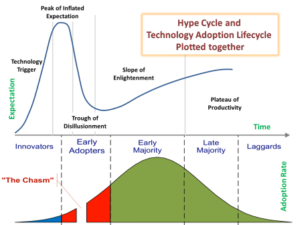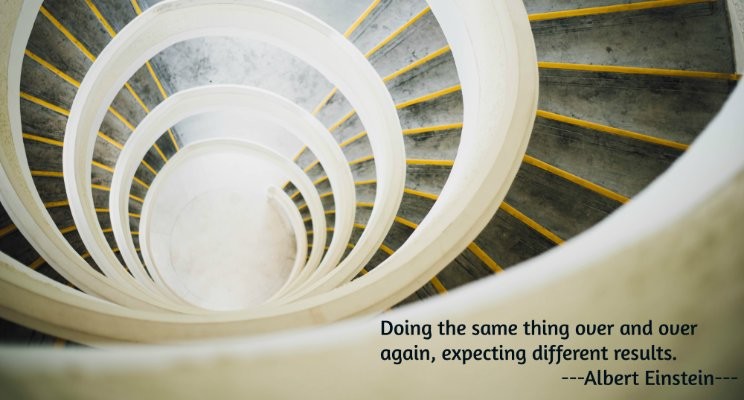Recently, I was invited to speak with the members of the American Nursing Informatics Association (ANIA) – San Diego Regional Chapter healthcare technology project management. The general membership is not responsible for managing projects in their day-to-day activities, but they are key subject matter experts and stakeholders on projects, not to mention early adopters of the technology in most cases. All of them are on some level deeply involved in the larger initiative known as Patient Engagement. Depending on the organization, “Patient Engagement” varies at a project level. Yet, regardless of scope, the objective is the same:
A change in the way in which healthcare providers and caregivers interact with patients.
Over the years I’ve worked with a number of companies providing technology solutions to the healthcare vertical. Most of those companies’ first attempts to implement the technology were unsuccessful. Not because the technology solution was inferior. It was the opposite, the technology was exponentially better than what existed currently. However, the threshold of change was just too great to overcome in a single project and concurrently within the project’s timeline. Those early technology adoption projects ran into what I call The Silent Constraint: Change.
Most project participants are familiar with the Budget, Scope, and Time constraints that exist for any project.
But what about Change? From my perspective, change has a 3-dimensional effect on the project.
The ability for the project end-user to consume and absorb that change quietly constrains the project.
Even projects that are delivered on time, within budget and scope, can and have failed because the consumers weren’t ready or able to make the change.
In my roles as a Rescue Project Manager and Project Trailblazer, there is one tool that I use consistently to level set and gauge the amount of change that I need to consider in my projects: Hype Cycle & Adoption Lifecycle.

Udayan Banjeree, used this diagram to explain his theory on the Consumerism of IT in his 2012 post, but I find day-to-day use as a barometer for enterprise implementation. Even for strategic non-technology work. The top graph, the Hype Cycle, shows the typical progression of a technology. The bottom graph, Adoption Lifecycle, shows the rate at which technology is adopted.
For example, remember when Smart Phones came out? In the Hype Cycle, the smartphone came in somewhere around the “Peak of Inflated Expectations”. Even though there were long lines for the first smartphones, those were the early adopters in the Adoption Lifecycle. Smart Phone adoption didn’t peak until later when a larger number of people understood how to use them and believed it made their lives easier.
The earlier the technology is in the Hype Cycle, the greater effect the Change Constraint will have on the project.
In speaking with the ANIA San Diego Regional Chapter, we discussed Patient Engagement projects and where those fell in the combination of the Hype Cycle and the Adoption Lifecycle as well as the Silent Constraint.
I offered three tips on how to give a voice to the Silent Constraint:
1.Assess and re-assess the Hype Cycle & Adoption Lifecycle for each phase or stage of the project. By understanding the gap between where the technology or strategy being implemented falls in the Hype Cycle relative to where the majority of the project end-users are in the Adoption Lifecycle, the project team can initiate a tactical plan for overcoming change even as early as project initiation. Key indicators that the Silent Constraint is being managed throughout the project:
- Increasing level of communication & business intelligence across the organization
- Increasing Cross Team Collaboration
- Increasing Structure of the overall project team
- Consistent Strategic Alignment with C-Level Objectives
- Increasing Organizational Readiness
If any of these items begin to taper off or decrease, especially at the C-Level, find a new offensive game plan for the project.
2. Play Offense. Project Managers often get caught in the pull and push of information that is project status reporting. Taking what is given and managing against a negative outcome in any sports environment would be called “playing defense”. In any project, particularly one that is early in the Hype Cycle, the reverse is needed. Push information across all levels and teams and pull towards the desired outcome:
- Be intentional…about who is on the project team, why, and what role they need to play on the project to contribute to its success.
- Take deliberate actions…around timing and communication. Don’t wait for the Friday status report to push information.
- Promote the effort…don’t hype it. If it’s good news promote the ability to execute. If it’s less than good news promote the effort to find solutions.
3. Find the Organizational Muscle. That’s right, project muscle. Who on the team or among the stakeholders has the organizational muscle to clear hurdles? This person is not only a champion but will also be a salesperson, a diplomat, and a problem solver to address Executive level concerns.
While these three items are distinctly different they are all inter-related. For example, the more offense played the more C-Level attention. The more C-level attention the greater commitment of resources and smaller hurdles. And so on.
“Technology changes incredibly fast, but people change very slowly.” Paul Adams, Global Head of Brand Design Facebook
___________
Tiffany Rosik, Principal Consultant at TGR Management Consulting, is focused on helping healthcare companies deliver results. Connect or follow Tiffany Rosik on LinkedIn.





